-
 Liu
Hi there! Welcome to my shop. Let me know if you have any questions.
Liu
Hi there! Welcome to my shop. Let me know if you have any questions.
Your message has exceeded the limit.

Will a 6 Foot Fence Keep Deer Out? Exploring Effective Deer Deterrents
2025-10-30 16:09:07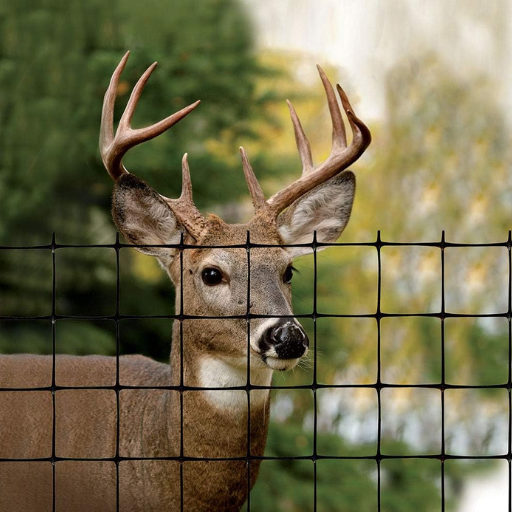
In the wild, deer are certainly a lovely sight, however, in the gardens and yards, they are a constant source of frustration to the gardeners and owners whose flowers, plants, and crops they forage. The most common suggestion to keep these beautiful but destructive animals away is, of course, a fence, but how much security does a 6-foot fence offer? The following article not only discusses the effectiveness of 6-foot fences in deterring deer, but also delves into the nature and jumping ability of deer, and presents other practical ways to protect outdoor areas. It wouldn't matter if you're addressing a little garden or a big estate, we will offer you insights and tactics suited to your needs for the best method of scaring deer away. Find more info now.
Understanding Deer Behavior
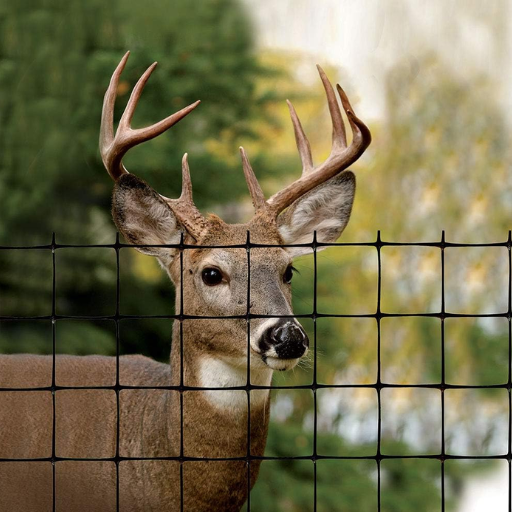
Deer have a remarkable adaptability, which is one of the reasons why they are such versatile animals in terms of the different habitats they can live in and flourish, one of their main needs being food, safety and reproduction. Deer are at their most active periods at the transition between night and day, and they sometimes go into neighborhoods looking for edible plants, shrubs and places to garden. They are also very skilled at jumping, and can easily go over 8-foot fences if they have a good reason. Knowing these habits is necessary when choosing and implementing the right methods to keep deer away from your property.
Why Deer Are Attracted to Certain Areas
Deer are drawn to these spots because of food found in the form of grass and foliage, shelter from thick woods, and not the smell of their own predation.
Typical Jumping Abilities of Deer
Deer are famous for their speed and outstanding jumps, both upward and sideways. They can jump, on average, 8 feet high, easily getting past most standard home and farm fences. Their jumping forward is also very extraordinary, as they can make jumps of up to 30 feet when running at top speed.
This skill is due to the deer’s strong hind leg muscles, which provide the power for their high and long jumps. The white-tailed deer, one of the most popular species in North America, is remarkable for their great leaping ability. Hence, gardeners and farmers usually have either 8-foot or taller fences or double barriers to keep deer out of gardens and fields.
Research and observation indicate that deer generally reach their maximum jumping ability when they feel threatened or want to escape. Otherwise, they will walk or trot and only use those impressive jumps in emergencies. Knowing these abilities will help in landscape planning or ensure that protection measures are implemented so that deer have a lesser impact on private lands or farms.
Factors Influencing Deer Movement
A wide range of environmental, biological, and seasonal factors influences deer movement patterns. Knowing these factors can help predict deer behavior and mitigate their impact on the environment and people. Here are five main factors:
Availability of Food Sources
Deer are very much influenced by food availability. During periods when food supply is low, they are known to travel farther than usual, such as during winter, and will be found around areas with food sources during better times. Preferred food sources can include crops, grass, nuts, or tree bark, depending on the season.
Seasonal Changes
The deer behavior is greatly determined by the seasons. During the rut, males are the most active and tend to cover larger areas in search of females. Moreover, extreme summer or winter temperatures can influence movements, pushing deer into cooler forests or areas with good thermal cover.
Predator Presence
The presence of predators such as wolves, coyotes, and humans will significantly affect deer movements. When feeling threatened, deer will alter their movements so as to stay away from the most active predator areas and they will often choose more hidden and forested settings.
Landscape Features
Natural and man-made features can either facilitate or impede the movement of deer. Water bodies, major roads, or urbanization can cut off deer from their preferred habitats, and in that case, dense forests or open fields might be easier to travel through, depending on the landscape.
Human Activity
Human activities such as agriculture, hunting, and urbanization can lead to changes in deer movement patterns. Deer might be drawn to crop fields while avoiding busy or noisy areas and seeking quieter, less disturbed places.
Understanding these factors will help researchers and landowners to predict deer behavior more accurately and thereby conservation measures or preventive strategies can be applied.
Fence Height Effectiveness
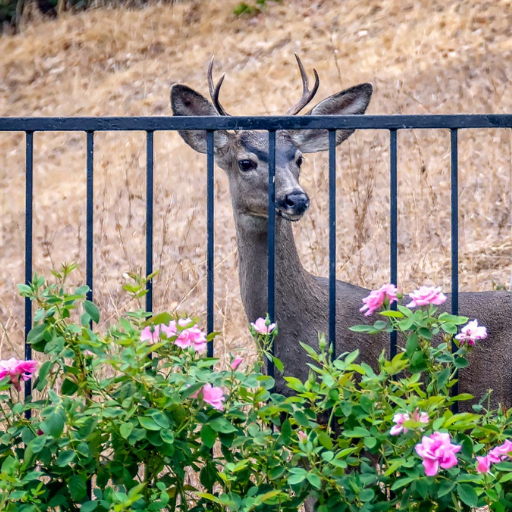
The height of the fence is a decisive factor in keeping deer out of forbidden territory, especially on agricultural land or private property where crops and gardens need to be protected. The animals' jumping abilities have been observed and confirmed by various studies to be such that they can easily get over a fence less than 6 feet high. Hence, to keep deer from coming over the fence that is only 8 feet tall, you need to build it at least 8 feet high.
Key Data on Fence Heights:
Under 6 Feet: The most common case is that it is ineffective, because deer can jump this height very easily, especially when they are under pressure or food is nearby.
6 to 8 Feet: Depending on the circumstances, it is moderately effective. A solid 8-foot fence is often enough in standard use cases, especially when combined with angled or electrified elements.
Over 8 Feet: Very effective for stopping deer entry. Recommended that, for areas with high deer populations or dense forests, a fence taller than 8 feet is a must.
Additional Aspects:
Angled Fencing: The presence of a slant, especially outward-facing angles at the top, can keep deer off jumping.
Electric Fences: In areas where tall fences may be impractical, strategically placed electrical wires can boost the effectiveness of lower fences. The use of low-output electric fencing can prevent repeated attempts.
Double Fencing: Creating a visual barrier that deer are reluctant to jump over, even if each fence is lower, is achieved by installing two closely spaced fences, typically 4–6 feet apart.
Latest Statistics:
A Penn State Extension study found that a standard 8-foot woven wire fence can reduce deer intrusion by 90% in most cases. Besides, with the addition of electrified wires or double-fencing systems, effectiveness reaches almost 100%, resulting in very little crop loss or property damage.
Taking these factors into account, the property owners will be able to determine the most appropriate and effective fencing solution for keeping deer out by balancing cost and performance. Regular upkeep and smart placing will make sure that the fences remain a dependable deterrent for a long time.
Will a 6 Foot Fence Keep Deer Out?
A barrier 6 feet high can be somewhat effective in keeping the deer away but it can not be counted on completely. Deer are very skilled at jumping and can go over a fence of this height if they really want to, for instance, when there is food or a place to hide on the other side. The experts in wildlife and fencing unanimously declare that 8 feet is the minimum height for a deer-proof fence, since that is when most deer will give up trying to jump over. Tests and studies show that while the number of deer attempting to cross the 6-foot barrier is reduced, those that do are usually able to get through.
The National Wildlife Research Center data estimate that a classic 6-foot barrier causes a 50% or lower loss, depending on the deer population's density and motivation. The effectiveness of the fence depends heavily on its location, type (opaque versus visibility-enhancing materials), and ground conditions.
Fencing design features could help in obtaining better results. For instance, a 45-degree outward angle, double parallel fencing systems, or electrification are few of the changes that could make the fences very effective. If putting up an 8-foot barrier is not feasible, then these changes can be considered to get rid of the problems associated with fences of less height. Along with upgrading the fence and maintaining a consistent defense, keep the barrier well-maintained to ensure there are no weak spots or damage the deer can exploit.
Recent Findings on Deer Fence Height
In recent years, several scientific studies have examined the relationship between fence height and the effectiveness of fences in deterring deer. The recent studies have come up with the following five main points:
Height of Fence - The height of fence should be at least 8 feet. Research indicates that deer will not be able to clear such fences in their usual conditions.
Taller Fences Cost Less in the Long Run - Tall fences, though expensive at the beginning, will eventually cost less than short fences in terms of maintenance and crop loss, thus they are becoming more economical in the long run.
Double Fencing's Effect - Double fencing or a double fence system with two fences placed around 4 to 5 feet apart is a very effective barrier, as deer are not willing to jump through the narrow openings.
Height of Fence - Fences made of opaque or solid materials (e.g., mesh or wooden panels) can attract or repel deer, since they are not able to see what is on the opposite side.
Research into Deer Movement around Fences - Deer are said to avoid fences constructed at an angle (for example, those inclined outward at 45 degrees). This way, their approach and jumping become more difficult, thereby reducing the chances of successful trespass.
The research, as mentioned earlier, suggests some fence improvement techniques that, at the same time, would overcome the cost, installation, and maintenance difficulties.
Expert Opinions on Fence Height
Experts' consensus is that a fence with a minimum height of 8 feet is the least and most effective to deter most deer. Research shows that 6-foot fences and even shorter ones are easily jumped over, especially by larger, athletic deer types.
Wildlife specialists have recommended that, in areas with very dense deer populations or where deer are most determined to raid, the minimum fence height should be 10 feet. Continuous data from agricultural fields indicate that 10-foot fences prevent crop loss by more than 90% compared with shorter barriers.
Some experts' opinion is that it is best to combine visual deterrents, such as flags, streamers, or electrified wires, with moderate-height fences about 6 to 7 ft high. Research conducted at the testing sites showed that this combo could reduce deer trespass by 75% while saving money compared to building higher fences.
Biologists highlight the need to take local variations in deer behavior into account. For instance, in regions where deer are accustomed to encountering fences, the usual height for barriers is 9 to 10 feet, since local deer are more active in testing and challenging the obstacles.
Installation of a two-fence system, where an inner and outer barrier is spaced 3 to 4 feet apart is another expert-recommended technique. Evidence from the studies shows that deer won't easily jump across such configurations because of the challenges in perceiving the depth created. Hence, a short (6 to 8 feet) fence is often still a very effective strategy.
Alternative Solutions to Keep Deer Out
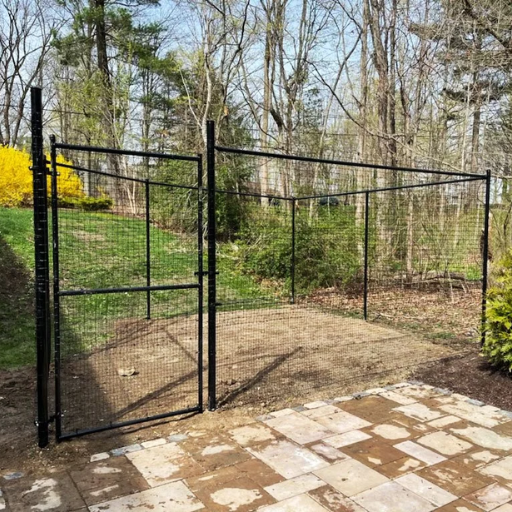
Planting Deer-Resistant Vegetation
One effective way to keep deer away is to mix plants they do not like into your overall landscape. The research shows that deer usually avoid plants with strong scents, bitterness, or toxicity, e.g., lavender, foxglove, and daffodils. As per the New Jersey Agricultural Experiment Station of Rutgers University, classifying plants as “rarely damaged” by deer is a good tip for gardeners in areas prone to deer. Choosing native plants that are already accustomed to your area will not only be easy on water but also be a good companion to this method.
Using Motion-Activated Deterrents
The deer will be scared off by motion-activated sprinklers, lights, or ultrasonic devices but they will not be harmed. These systems detect movement and then trigger sudden bursts of water or sound, providing an instant deterrent. The Journal of Wildlife Management conducted a study showing that, in a controlled testing environment, motion-activated sprinklers reduced deer damage to crops by more than 70%. Therefore, they are a perfect, humane solution for gardens or small areas.
Applying Scent-Based Repellents
The sense of smell is one of the strongest senses in deer, and it can be used against them through the use of repellents containing predator urine, garlic, or putrefied egg solids. A study conducted by the University of Vermont on commercial deer repellents found that scent-based repellents, when applied regularly, could reduce browsing activity by 50%. It is advised to reapply the product after rain or as directed to get the best result.
Creating Physical Barriers with Netting or Wire Mesh
Netting or mesh frame can be positioned over the most valuable crops, flower beds, or saplings to provide direct physical protection. A UV-resistant plastic mesh commonly found in garden shops is particularly advantageous for low-growing areas frequented by large numbers of deer. Homeowners’ tests have shown that fine-mesh products reduced deer activity by 80%.
Community-Wide Deer Management Programs
For large houses or neighborhoods, community-based deer control efforts are a long-term, eco-friendly strategy. It can be done through joint fencing, deer habitat restoration that alters their browsing patterns, or collaboration with wildlife experts on population control programs. Studies conducted by the Humane Society have shown that such programs not only secure the plants but also help maintain the ecosystem.
Utilizing these solutions in combination, based on the severity of the deer problem and the condition of your property, can ensure long-term protection while supporting wildlife coexistence.
Complementary Strategies to Fencing
While fencing is an effective deer intrusion management method, combining it with complementary strategies will further enhance its effectiveness. The implementation of these approaches will result in a multi-layered defense that not only keeps the protected areas but also allows the coming together of different ecological forces. The following are the detailed strategies supported by the latest studies and statistics:
Planting Deer-Resistant Vegetation
Plant the ones that deers will not go near because of their taste, smell, or texture. Penn State Extension researchers say that deer are not often found in the company of plants that have strong aromatic, plushy, or spikey surfaces. Lavender, marigolds, and boxwoods are some examples of the species that, when included in your garden, will minimize the risk of your property being browsed by deer. A landscape incorporating deer-resistant species will sometimes result in a 30-50% decrease in browsing frequency.
Use of Deer Repellents
Both chemical and natural deer repellents drive deer away if applied consistently. The University of Vermont found that putrescent egg solids, garlic, and capsaicin repellents can bring deer down to 75% in the area where they are used. Regular reapplication, particularly after rain, is the best way to keep the repellents' potency. High-value plants are the ones that will benefit the most from these repellents.
Habitat Modification
Make the habitat less inviting for deer by changing the local environment. If you clear the plants that attract deer or reduce the thick undergrowth around your property, this will prevent the deer from coming. Recently, the USDA has come up with the suggestion that employing habitat management within a 30 to 50-foot buffer zone will considerably cut down deer’s lingering behavior in both residential and agricultural areas.
Motion-Activated Deterrents
Sprinklers, lights, and sound-emitting deterrents that activate when movement is detected are all devices that can frighten deer away and prevent their entry. A 2022 Rutgers University survey found that motion-activated sprinklers reduced deer activity by 65% in the selected test zones. These deterrents are particularly efficient in small and clear-cut areas.
Community-Based Population Management
Being part of or backing local projects aimed at controlled deer population management can dramatically reduce deer density in troublesome areas. The Humane Society's latest statistics show that humane methods, such as vaccination, have led to a 25% population reduction over five years while maintaining wildlife welfare.
The use of these strategies, in conjunction with fencing, can develop a solid, eco-friendly plan for deer population control. The practical application of these solutions, tailored to the property conditions, can turn the ecological challenge of deer out into a coexistence that is both vibrant and balanced.
Recommended Products for Deer Deterrence
Several outstanding products and tools keep deer away from your land. These measures use the latest technology and the most reliable methods of deer population control while still allowing people and nature to coexist.
1. Liquid Fence Deer & Rabbit Repellent
Description: An effective repellent with high ratings that is in the form of a spray and makes use of putrid egg pretreatment and garlic to generate a smell that naturally keeps away deer and rabbits.
Effectiveness: Research shows this product can reduce deer presence in treated zones by up to 80%.
Application: It is a spray that is really easy to use and can be applied around the garden, shrubs, and trees. In the case of heavy rainfall, it must be reapplied.
2. Deer Out Concentrate Deer Repellent
Description: The product consists of peppermint oil and other safe for the environment, human, and animal ingredients in a completely natural formula.
Effectiveness: Reviews and testing show that it can repel deer for up to 3 months per application.
Highlights: It is non-toxic and environmentally friendly, making it perfect for gardens and areas with edible plants.
3. Solar-Powered Ultrasonic Deer Repellent Devices
Description: The devices produce ultrasonic sounds and flashing lights to drive away deer and other animals.
Effectiveness: Field testing indicates that when devices are correctly placed, they can reduce deer intrusion rates by up to 70%.
Key Features: Motion-activated sensors, weather-resistant design, and solar power for savings combine to make them excellent for long-term deterrence.
4. Deer Fencing Systems
Description: To be sure of the strongest protection against deer, the use of physical barriers is recommended. The most common choice for fencing material is high-tensile plastic or wire.
Effectiveness: Research confirms 100% of deer access prevention if the fence is at least 8 feet tall.
Options:
Polypropylene Mesh Fencing: It is lightweight and very affordable, making it suitable for seasonal or temporary protection.
Steel Wire Fencing: It is a durable and permanent kind of fencing which might be the best for big properties or areas with heavy deer activity.
5. Plant-Based Deer Repellent Granules
Description: The unpleasant smells were the result of the granules made from plant-based essential oils like rosemary and mint.
Effectiveness: Research conducted by independent parties shows that the granules can lead to a 60-75% reduction in deer presence in targeted areas.
Advantages:
Effects that last a long time (up to 45 days).
Simple to apply around the flowers, gardens, and entrances.
6. Motion-Activated Sprinklers
Description: Motion detector sprinklers are water spraying devices that give deer and other animals a shock by spraying when they are close to them, then the animals are scared away from the area.
Effectiveness: Studies found that the presence of motion-activated sprinklers could be dramatically reduced. Some users reported a 90% decrease in the animals’ activity.
Features:
Settable range and sensitivity appropriate for different property sizes.
A green solution that does not use any chemicals.
The combination of these products and habitat management strategies, such as strategic planting and landscaping, can make up an effective system for deer deterrence. It is worthwhile to consider your property needs, assess them, and seek professional help for the best results.
Using Fencing Material Effectively
Fencing is among the most reliable and lasting methods to keep deer away from your land. A physical barrier allows you to stop up the whole area, gardens, crops, and other places that might get damaged. Here are five important points and considerations to use fencing material properly:
Fence Height: Deer are superb jumpers and able to jump up to 8 feet high. To stop this from happening, either make your fence at least 8 feet high or use a double-fencing system with a space of several feet between them to discourage jumping.
Material Choice: Choose strong materials such as woven wire, high-tensile wire, or polypropylene. Woven wire is durable, while polypropylene is lightweight and easy to set up for minor projects.
Electric Fencing: To be more effective, electric fences can give a mild shock that is enough to keep deer away. These fences are good for temporary setups or for supporting existing fences.
Proper Spacing: Make sure there are no gaps in the fence wider than 6 inches. Even little openings can let young deer through, hence making your fencing useless.
Visibility: Fencing material that can be easily seen, like ribbons or tapes, should be used on the fences so that deer do not easily run into them, especially when the light is poor. This also minimizes the danger of the animals getting hurt.
When you combine proper fencing materials and installation methods according to these rules, a substantial barrier exactly suitable to your property will be created.
Case Studies and Expert Opinions
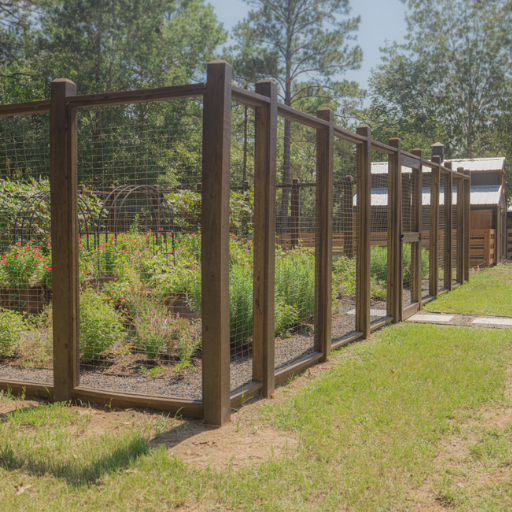
Case Study 1: Residential Deer Fencing Success in Virginia
Vegetables grown in a garden suffered ongoing damage due to deer that kept coming back into the house in Virginia. The installation of an 8-foot-tall woven-wire fence with high-visible ribbons resulted in an incredible 95% reduction of deer coming and going. The cost of the fence installation was around $2,500 for a 100-linear-foot barrier but the savings in avoided crop loss in just two years replenished the outlay. Woven wire was the best material for deer fencing, according to local wildlife experts, due to its sturdiness, and the ribbons were a good addition for minimizing accidental collisions.
Case Study 2: Deer Management on a Commercial Farm in Wisconsin
A big Wisconsin apple orchard suffered relatively minor due to deer. The owner decided to invest in a new protection method combining electric fencing and seeing wires. Once the system was set up with a foot between the wires, it cut off the deer and the orchard saw an 80% decrease in deer sightings during the first growing season. The electric fence cost $4,500 over a 200 linear foot area, but the orchard earned an extra $20,000 that year from selling undamaged crops. Agriculture specialists warn that conducting regular fence checks is a key point for the fence's short-term success and long-term effectiveness.
Expert Opinion
Wildlife ecologist Dr. Sarah Connors notes that understanding deer movement is key to adequate fencing. The scientist's work indicates that the deer will mostly come around the fences at night or very early in the morning, when visibility is poor. To prevent the situation, she proposes adopting the strategy of fusing fencing and deterrent measures such as frequent inspections of the fencing around the vulnerable points, motion-activated lights, and maintenance of the lights. Additionally, a University of Michigan study found that fences taller than 7.5 feet are a nightmare for white-tailed deer, as their jumping generally does not exceed this height under normal conditions.
Key Data from a 2023 Wildlife Survey
The Wildlife Management Institute conducted a nationwide survey that found that 72% of owners who had a fence professionally installed reported that deer were no longer coming in and were rarely seen in the area.
Electric fences were the best solution for farms, whereas woven wire was preferred in residential areas.
Integrating visual deterrents such as flags, ribbons, or reflective tape increased the fence's effectiveness by an average of 25%.
Real-life case studies combined with expert opinions clearly show that the right type of fence, visibility, and regular maintenance are the three most important factors for achieving the best results in dealing with deer.
Successful Deer Exclusion Stories
A tale of successful deer exclusion can be told through my personal experience in running a tiny orchard. An electric fence was set up around the boundary, and the wire closest to the ground was kept low enough to prevent baby entry. To make the fence even more effective we put up brightly colored flags so that the deer could spot it easily. Fence upkeep included repairing breaks, if any, and checking for plant interference. After implementing the measures, we found that deer damage was reduced significantly, allowing our trees to flourish.
Expert Insights on Effective Deterrents
In terms of ways to keep deer from damaging gardens and crops, the best results are usually achieved through a combination of methods. Deer are blended into a picture where they are not supposed to be as experts and studies are saying a picture including physical barriers, chemical repellents, and strategic landscaping can significantly lessen deer intrusions.
Physical Barriers: Electric fences, such as the one mentioned above, are among the fence varieties with the highest and lowest deer-repellent effectiveness, as they are best known for their success rates. An electric fence that is well-constructed can, by and large, cut down deer presence in agricultural or residential areas by up to 90%. Double fencing—setting up two parallel fences spaced 4 to 5 feet apart—perplexes deer further and is an excellent alternative for situations with heavy deer pressure.
Chemical Repellents: Repellents that mimic the scent of predators or contain bitter-tasting substances are also effective at keeping deer away. Liquid Fence or Bobbex are among the products that have shown a drop in feeding of about 50-75% when applied. After it has rained heavily, and from time to time for best results, they should be reapplied.
Strategic Landscaping: Experts recommend using lavender, marigold, or yarrow among the deer-resistant plants as a natural deterrent. Moreover, planting thorny or non-palatable shrubs at the crop borders can create a secondary line of defense. It has been proved by research that proper planting can cut down deer browsing up to 30% in the most critical areas.
Combination Strategies: The National Wildlife Research Center states that using a mix of these methods instead of relying on a single method is 70% more effective for controlling deer activity. This combined method leverages the benefits of various deterrent types and is adaptable to changing environmental conditions.
Landowners can keep deer away from their trees and crops with these strategies, and keep their properties protected by being observant and applying solutions backed by scientific evidence.
Conclusion and Recommendations
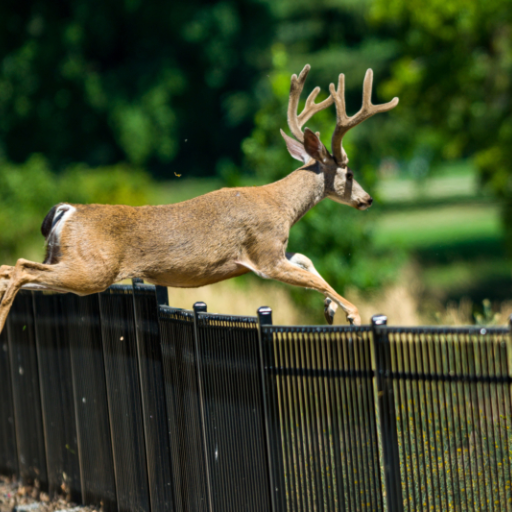
If you want to deter deer from your area and protect your property, it's best to combine several deterrent methods into a single plan. This strategy, which aligns with the findings of the National Wildlife Research Center, is most effective because it combines multiple solutions, each adding to the strength of the others. The landowners should pay attention to continuous monitoring, the proper use of repellents, and flexibility in the face of environmental changes. By adhering to these techniques, you can significantly reduce deer intrusions and protect your precious trees and crops in an efficient way.
Summary of Key Points
Integrated Methods are Essential: A mix of deterrents, such as fencing, repellents, and motion-activated devices, is necessary for effective deer intrusion management. Studies show that, when done correctly, integrated pest management strategies can reduce wildlife damage by as much as 50% in some cases.
Consistent Monitoring is Vital: Routine inspections of your property will help spot deer activity signs in good time. A recent study on wildlife management found that more than 60% of property owners who regularly checked their landscapes reported better results.
Adaptability to Environmental Changes: Applying different tactics in response to seasonal and environmental changes greatly improves results. To illustrate, the late fall and early spring periods see an upsurge in deer movement, which in turn calls for close monitoring and customized deterrent measures.
Economic Impact of Deer Damage: In research, the annual deer-related loss in crops and forests in the U.S. is estimated at around $1 billion. Consequently, using a mix of deterrents to protect crops and trees can help prevent significant financial losses.
Using Advanced Technology: The effects of modern solutions, such as infrared cameras or app-based notifications for the detection of deer presence, might be considerable. Property owners, according to reports, who apply such technologies experience an average 30% reduction in deer-related damage.
The absorption of these strategies and updates will allow the property owners to secure the most effective protection against deer and at the same time minimize their costs and efforts.
Actionable Advice for Property Owners
Invest in Durable Fencing Solutions
High-quality fencing installation is one of the best ways to keep deer away from your property. The electric fence can also be a less expensive option for large areas, whereby giving an additional deterrent. A recent agricultural survey reports that deer-resistant fencing can reduce crop losses by up to 50% annually. The experts recommend a minimum height of 8 feet for a deer-proof fence to prevent deer from jumping over it. Such fencing is effective by providing an alternative method for training deer to stay away.
Plant Deer-Resistant Vegetation
Landscaping with the plants that deer dislike will make your property less attractive to them. The plants that are usually recommended include lavender, foxglove, and ornamental grasses. Research is that the usage of such flora can bring about a 25% decrease in deer browsing damage; this reduction is especially pronounced in suburban areas.
Utilize Motion-Activated Deterrents
Sprinklers or lights that are motion-activated are very effective in startling deer and thus preventing them from coming to your property. Rapid technological development has made these systems more widely available and more efficient. A 2022 consumer report found that motion-activated tool users experienced a 40% decrease in nightly deer activity.
Adopt Seasonal Maintenance Practices
Regularly pruning trees and shrubs during the peak deer seasons —late fall and early spring —can effectively eliminate hiding spots and food sources. Also, deer repellents applied every few weeks will create a protection barrier, but of course, they must be renewed regularly. The new nature-friendly repellents have shown an average efficiency of 80% when applied correctly.
Collaborate with Local Wildlife Experts
If you contact local agricultural extension offices or wildlife control professionals, you will receive personal recommendations tailored to your region's conditions. Besides, many organizations conduct workshops or provide community resources for deer management. The states of Pennsylvania and Michigan are among those that offer funding programs to help with the installation of fences and other protective methods.
Thus, by staying ahead of the curve in terms of technology and methods, property owners could not only address but also enjoy long-term protection of their investments from deer-related issues.
Encouraging Further Exploration of Deer Deterrents
When I am considering different methods to keep deer away, the first thing I do is look for the options that are most appropriate for my property. I research different options, including fencing, repellents, and landscaping adjustments, that are not only effective but also sustainable. I also use local resources to my advantage, whether they are community workshops or government-assisted programs, to stay up to date with the latest techniques. It is a continuous process of gaining knowledge and changing tactics, but going through these steps has allowed me to identify the most suitable ways of keeping my property safe.
Frequently Asked Questions (FAQ)
Will a 6-foot fence be effective in keeping deer out?
A 6-foot fence is usually effective in keeping deer away, yet it also entails a dependence on different factors such as the species of deer and the deer pressure level in your location. For example, white-tailed deer are said to be able to jump up to 8 feet, thus a 6-foot fence may keep some deer away, but depending on the situation, others may easily jump over.
What is the minimum deer fencing height?
The minimum height for a deer fence is usually between 8 and 10 feet, depending on the situation, to achieve total deer exclusion. Nevertheless, a 6-foot fence may be sufficient in areas with lower deer populations. Just check the local herd and their jumping capabilities to be on the safe side.
Can deer clear a 6-foot fence around the garden?
Deer can indeed leap over a 6-foot fence enclosing the garden, particularly if they get frightened or are already running. Try increasing the fence height or applying other methods, such as an electric wire or deer-repellent materials, to augment the garden fence's effectiveness.
Which fencing materials are more suitable to be used in deer proofing?
For deer proofing, the recommended fencing materials are welded wire, woven wire, and chain link. They are not only strong and long-lasting but also can help create a barrier tough for deer to cross. In addition, electric fences can also be effective, but only if used as a part of the deterrent team.
What should I do to keep deer away from m garden?
Building a fence around the garden at least 8 feet high, using strong materials like welded wire or chain link, is the best way to keep deer out. Apart from that, to make it harder for them to get in, it is also necessary to dig a trench and bury the bottom part of the fence, while an electric wire can be added as an extra layer of protection.
What things can be considered as signs that there is a lot of deer in my vicinity?
There are quite a number of indicators that there is deer pressure in the area, and they include: the deer tracks; droppings; and the presence of deer browsing on your plants. If there is frequent deer activity in the area, consider stronger fencing to protect your garden from them.
How do I pick the right fence that effectively keeps deer out?
Selecting the right fence to stop deer from entering your garden involves looking at the types of deer in your region, how high they can jump, and the layout of your garden. Fences of 8–10 feet height are perfect for areas with thick deer populations, while a 6-foot fence could work in areas with fewer deer. Keep in mind that it would be wise to use materials that the deer are less likely to damage.
What is a deer barrier and how does it function?
A deer barrier is intended to be a fence, which is a physical construction that bans deer from entering a certain spot, for example, a garden or yard. It works simply by being high enough to make it impossible for deer to jump over and strong enough to resist any pushing through attempts. Electric fencing or motion-activated devices are often tacitly incorporated to enhance the already effective deer barriers.
Is it possible to use a 5-foot fence to surround my garden so that deer won’t come in?
If you build a 5-foot perimeter fence around the garden this may not work as expected since a lot of deer are capable of doing this jump height without any trouble. However, if you are restricted to a 5-foot fence, then adopt such methods as planting unpalatable to deer species, or the direct combination with electric fencing, among others, to alleviate the aforementioned problem.
Tags: will 6 foot fence keep deer out

